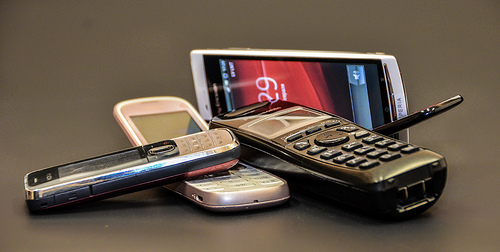Since 2005, we read and hear that each approaching year is going to be the “year of mobile” or that “mobile advertising will become more than important than digital”. At same time, we understand that all media is digital media. People spend their days using different screens all the time. Television might not be the queen anymore, but what happens on the web is well-connected with things served or broadcast on the big screen. Television becomes the trigger, most of the time, of our online searching or browsing. A typical day is the result of switching between different screens. A screen becomes tightly connected to us, like our smartphones. Silos become blurry. Traditional roles or descriptions don’t exist and everything becomes a dance: a really spontaneous, and other times well-described dance. Because as we know, it takes two to tango. And those two are brands and the consumers.

This year, smart phone use in the United States will hit 80%, tablets will overtake sales of PCs, and already about half of online traffic is taking place on the mobile web. People still talk about how important mobile is, or how promising the mobile advertising and the mobile channel might be from any possible perspective. But at the same time, as we run further into 2014, it becomes obvious that mobile is dead and we have to start talking about mobility.
It is really important to be able to understand the bigger idea, not just a channel. Mobility is all about connecting dots, understanding the consumers’ choreography around brands, moments in their daily routine and their desire to stay seamlessly connected with what they are interested in. Mobility is very much at the heart of culture right now.
Mobility in marketing is going beyond mobile advertising to adding mobile functionality and targeting across your marketing efforts. Mobility is all about disrupting existent models and connecting in a really new way marketing with the purchases. The consumer’s journey through the mobility lens is redefined only because he is able to skip steps, make decisions easier, quicker, and in a perfect combination of his culture and what the brand is all about.
For brands, instead of allocating a separate budget to mobile alongside other media channels, it becomes mandatory to be able to take a holistic approach. The days of old fashioned planning are gone and everything has to do with how a brand can take advantage of media convergence. The most important thing is to understand mobility not as a different channel but as something able to chart consumers’ nomadic moves.
We have to stop putting mobile in a silo. A number of media companies are leading the way. According to the New York Post, about a third of its audience (print and digital) is coming from mobile devices. Over 65% of Twitter’s growing ad revenue comes from mobile ads on smartphones. In-store experience is changing because of the iBeacon, or similar upcoming technologies.Using low-frequency Bluetooth technology, it creates GPS-like utility in the store itself that is able to pinpoint–within a few feet–a shopper’s location through his smartphone. Then it prompts him with special offers as the consumer navigates the store.
Mobility is the way marketing is getting more intelligent than ever. Big Data and IoT generate all the data necessary to have even smarter recommendation engines. Data becomes more and more important, but the most important thing is our ability to combine different sources of data and out-coming models. This allows us to understand more and place messages in a more efficient way about products.
At the end, the most important thing is to understand the choreography of a consumer–his nomadic behavior around brands and how we can be at the next touchpoint, able to give him what he expects without asking for it.





